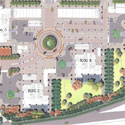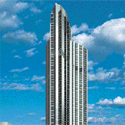Filter by
You must be a CTBUH Member to view this resource.
Tower Palace Three, Tower G
Building
Completed, 2004
residential
composite
263.7 m / 865 ft
73
6
610
You must be a CTBUH Member to view this resource.
You must be a CTBUH Member to view this resource.
Construction Start
Completed
Usually involved in the front end design, with a "typical" condition being that of a leadership role through either Schematic Design or Design Development, and then a monitoring role through the CD and CA phases.
The Design Engineer is usually involved in the front end design, typically taking the leadership role in the Schematic Design and Design Development, and then a monitoring role through the CD and CA phases.
The main contractor is the supervisory contractor of all construction work on a project, management of sub-contractors and vendors, etc. May be referred to as "Construction Manager," however, for consistency CTBUH uses the term "Main Contractor" exclusively.
Material Supplier refers to organizations which supplied significant systems/materials for a building project (e.g. elevator suppliers, facade suppliers, etc).
You must be a CTBUH Member to view this resource.
Usually involved in the front end design, with a "typical" condition being that of a leadership role through either Schematic Design or Design Development, and then a monitoring role through the CD and CA phases.
The Design Engineer is usually involved in the front end design, typically taking the leadership role in the Schematic Design and Design Development, and then a monitoring role through the CD and CA phases.
The main contractor is the supervisory contractor of all construction work on a project, management of sub-contractors and vendors, etc. May be referred to as "Construction Manager," however, for consistency CTBUH uses the term "Main Contractor" exclusively.
Material Supplier refers to organizations which supplied significant systems/materials for a building project (e.g. elevator suppliers, facade suppliers, etc).
CTBUH Releases Analysis of Global Population and Tall Buildings
13 April 2011 - CTBUH Journal

03 November 2011 | Seoul
Lynn S. Beedle Lifetime Achievement Award: 40 Years of Designing the Supertall
As one of the world’s foremost experts on supertall buildings, Adrian has contributed greatly to the development of this highly specialized building type. Adrian will...

13 April 2011
Tall and Urban: An Analysis of Global Population and Tall Buildings
CTBUH Research
Tall buildings are spreading across the globe at an ever-increasing rate. This study demonstrates the relationship between population and tall buildings across those countries and...

03 November 2011 | Seoul
Lynn S. Beedle Lifetime Achievement Award: 40 Years of Designing the Supertall
As one of the world’s foremost experts on supertall buildings, Adrian has contributed greatly to the development of this highly specialized building type. Adrian will...

10 October 2011 | Seoul
In this talk, Adrian Smith traces the origin of the skyscraper from the early 20th-century tripedal designs to beyond the world's next tallest building.

13 April 2011
Tall and Urban: An Analysis of Global Population and Tall Buildings
Tall buildings are spreading across the globe at an ever-increasing rate. This study demonstrates the relationship between population and tall buildings across those countries and...

10 October 2004
It was intended in this study to deduct the elements that may be applied in planning in future through assessment of post occupancy evaluation of...

10 October 2004
Influence of Architectural Elements on Stack Effect Problems in Tall Residential Building
Many studies have been done on the problems caused by the stack effect in office buildings, and several solutions have been proposed. This paper presents...
Subscribe below to receive periodic updates from CTBUH on the latest Tall Building and Urban news and CTBUH initiatives, including our monthly newsletter. Fields with a red asterisk (*) next to them are required.
View our privacy policy